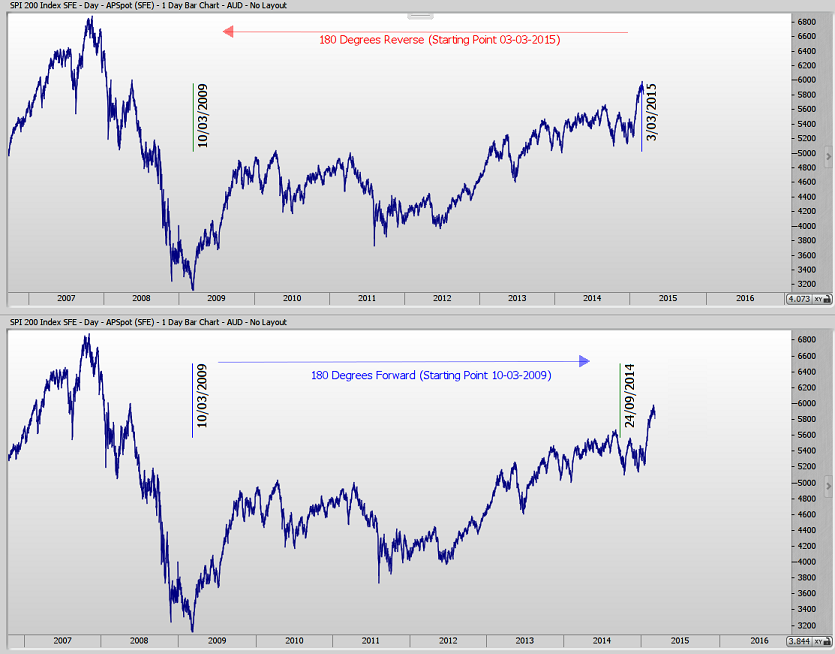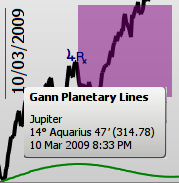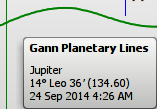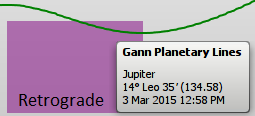Why can Degree Counts vary between two dates
Question
Why can Planetary Degree counts vary when Forward / Reverse directions are compared between two dates?
Example
A Time by Planetary Degrees tool (Geocentric – Jupiter – Reverse Direction) applied on the 3rd of March 2015 marks the 10th of March 2009 as the first 180-degree level. However, the same Time by Planetary degrees tool applied to the 10th of March 2009 (moving forward) marks the 24th of September 2014 as the first 180 Degree level.

Answer
This variation occurs because the retrograde motion of Jupiter (in the above example) means that Jupiter is positioned at 134.78 degrees twice (actually it passes that angle three times through the whole retrograde cycle). So when we go forward from 314.78, the requirement of reaching 134.78 is satisfied the first time Jupiter reaches that angle. In the reverse case, Jupiter initially travels in the "wrong" direction before reaching 314.78.

314.78 Degrees plus 180 Degrees = 134.78 Degrees.
By tracking the movement of Jupiter on the chart itself using a GPL, moving forward you can see Jupiter reaches a position of 134.78 Degrees on the 24th of September 2014.

Shortly after Jupiter moves into Retrograde, and on the 3rd of March 2015 reaches a position of 134.78 Degrees again.

It is the effect of the retrograde movements which cause the variations in date when comparing forward / backward movements (in degrees).
Tracking the movement on the Ephemeris